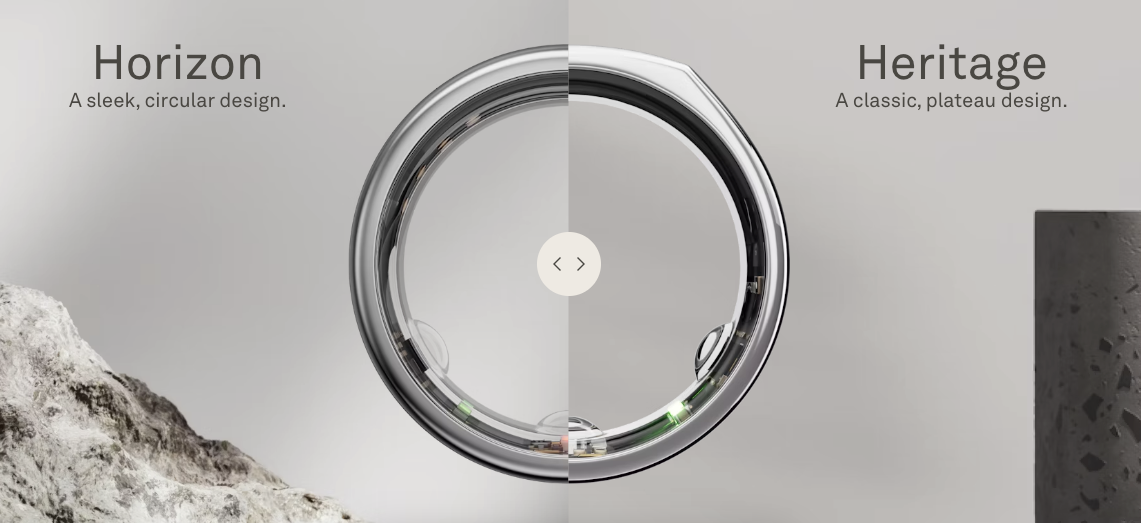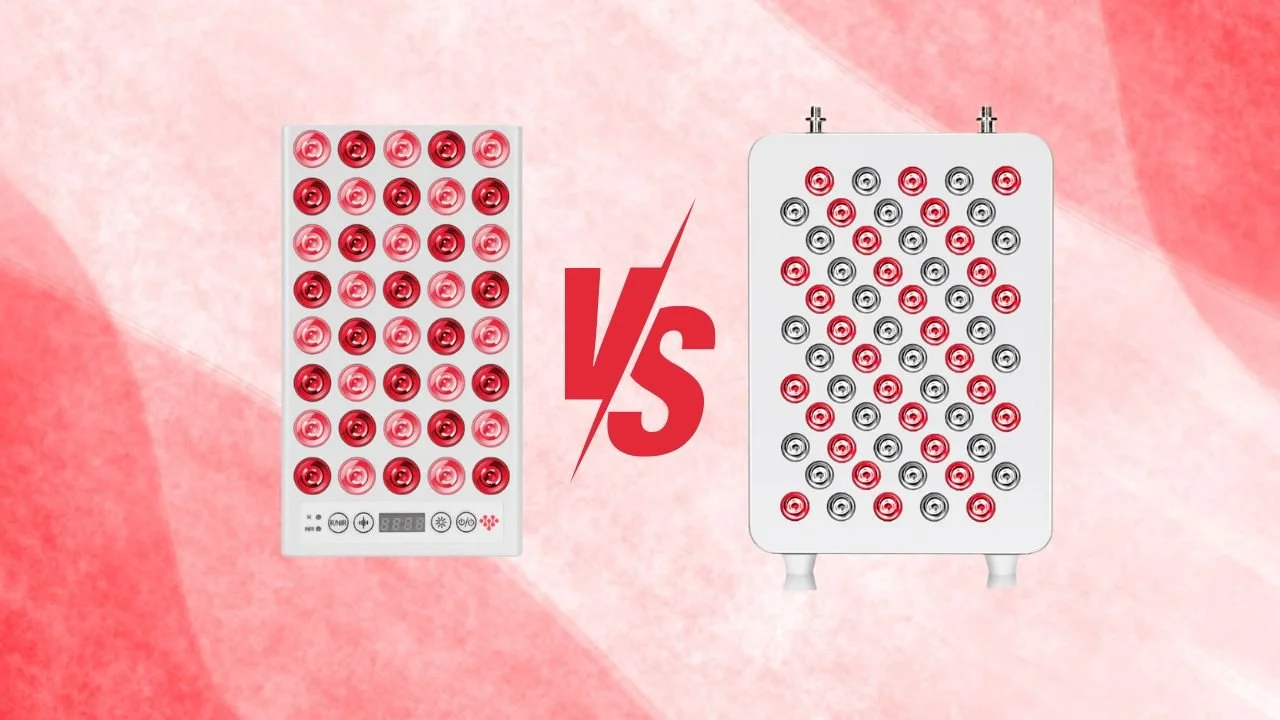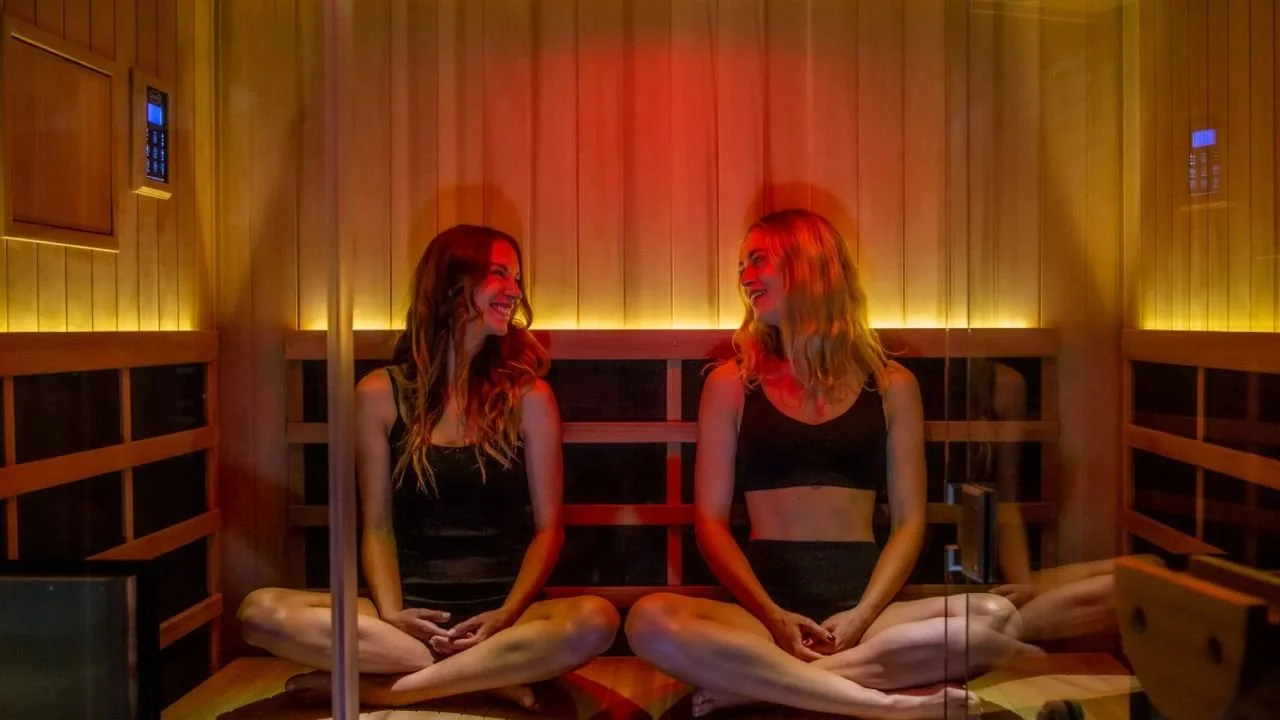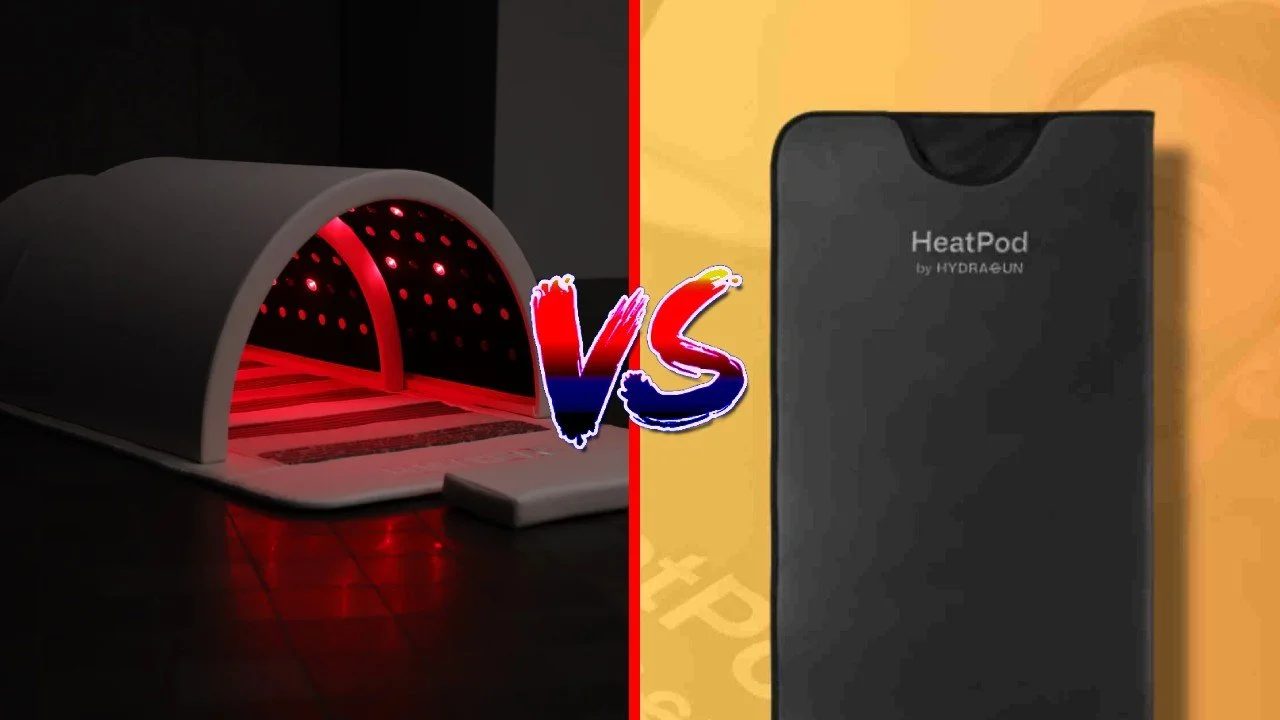Why HRV Is So Important For Recovery. Plus, How To Track HRV 2024
Heart Rate Variability goes hand in hand with fitness, performance, recovery and wellness…and there's plenty of ways to track it.
Gone are the days of simply measuring heart rate (HR) to track your fitness or recovery. HR is a measurement at a given point in time that may show you your current exertion level doing a given exercise or movement.
But, that doesn't paint the most accurate or descriptive picture when we are trying to look out our fitness level, readiness to perform or train and just how recovered (or not recovered) we are.
Enter, Heart Rate Variability (HRV)…
Put simply, HRV is the variation (as the title suggests) that exists in the time between our heart beat. It is considered one of the most significant biomarkers for measuring physical fitness and determining your body’s readiness to perform. On a basic level, the higher your HRV, the fitter you are and the more primed the body is for action.
This is gold in the wellness and recovery space, it takes the guesswork out of operating ‘by feel’ and gives us objective data to indicate whether we should back off the pace a little or can take it up a notch and add another training session, race or big day onto the regime.
What Causes Changes In HRV And How Can I Improve HRV?
Well there's plenty that makes your HRV go down, that’s for sure. The sad thing is, generally they are the easiest to do. It is true that fitness and wellness are one of the very few things in life that can not be bought and must be obtained through hard work and dedication. But you can buy a device that measures HRV for training and recovery, which we will discuss further on.
Getting down and dirty with HRV, we know that it originates from the nervous system, more specifically from the autonomic nervous system. We know you've probably heard of the ‘fight or flight’ response and the ‘rest and digest’ response. These terms were coined to explain the functions of the Sympathetic and Parasympathetic systems, respectively.
HRV essentially measures the balance between these two systems. A high HRV indicates a robust ability to switch between states of stress and relaxation, signifying a well-balanced autonomic nervous system. Conversely, a low HRV can indicate a dominance of the Sympathetic system, suggesting that the body is under more stress and has a reduced capacity to recover and adapt. This makes HRV a valuable metric for understanding overall health, stress levels, and the effectiveness of recovery strategies.
The battle of the systems
You can probably guess that the sympathetic (fight or flight) system is what is activated when performing exercise, when we are stressed or when we perceive a threat like an oncoming car or a fight, causing an increase in heart rate, sweating and raised respiration.
On the flip side, the parasympathetic (rest and digest) is indeed what is turned on when we are in a state of relaxation, are eating or have eaten, or are sleeping. Although we hate mixed messages as humans in general, this is a push and pull relationship of mixed messages between the two systems, essentially causing that variation in your heart beat - HRV.
Understanding this balance is crucial for optimizing health and performance. Athletes, for example, often strive to enhance their parasympathetic activity during recovery periods to promote healing and adaptation. Conversely, during intense training or competition, sympathetic dominance helps them meet the physical demands. Monitoring HRV provides insights into how well these systems are functioning and guides adjustments in training, recovery strategies, and lifestyle habits to achieve peak performance and overall well-being.
Understanding what makes your HRV tick
The interplay of HRV and stress (or relaxation) is well documented science and neurobiological evidence, like this study, “suggests that HRV is impacted by stress and supports its use for the objective assessment of psychological health and stress.
HRV is very individualised. Science tells us that there are many permanent, dynamic and point-in-time factors that influence how good or bad our HRV will be. Some of these factors like overall fitness level, stress levels, hydration levels and fatigue can be managed over time or immediately. But others, like gender, age, pain, genetics and some environmental conditions are not as easily affected or manipulated.
In saying that, as we know you are aware, our overall health is generally a case of “you only get out what you put in”. This generally remains true for HRV. We have the ability to decide daily on a multitude of factors that will immediately or in the future affect our health, fitness and recovery.
Food choices and nutrition undoubtedly affect our HRV. That is why it is not only important to eat well, but also to supplement effectively. Sleep and rest is also in the top 3 for having the most significant effects on HRV and it is potentially the most heavily underrated, under respected daily practice.
Self-Experimentation using Food, Training and Sleep effects on HRV
What we are getting at here is, knowing what your HRV score is is one thing, but knowing what to do with the knowledge of your HRV is another. If your HRV is high on average, great! What makes your HRV good? If you have a low HRV, what can you do to make it increase?
Specifically, what foods improve your HRV, does meditation improve your HRV, does a particular sauna or cold therapy practice make your HRV sore, does consecutive nights of good sleep improve your HRV?
The answer to all of these questions is generally a ‘yes’, and in response to the nutrition and HRV question it is documented that HRV is an effective biomarker, as “low HRV is associated with a lower capacity for self-regulation of physiological, motional, and cognitive responses and of less effective adaptation to environmental stress and demands, including exposure to food stimuli.”, outlined in depth in this article on Nutrition, Obesity and HRV.
What the RG team have had great success and progress on, past and present, is keeping a HRV diary. This means employing a little bit of trial and error and self-experimentation by firstly eliminating things that you think may have a bad effect on your HRV (starting with obvious ones like alcohol, sugar and perhaps stimulants).
You can also add in certain practices or recovery techniques that are well known to improve HRV like sauna bathing, cold therapy or ice baths, getting sufficient sleep through supplementation (if necessary), and reducing stress through meditation.
By engaging in certain practices and playing with your nutrition, while simultaneously tracking your HRV, with a fitness+food diary like the one we use, you can get an insight into what works and what doesn’t for boosting your HRV score.
Let’s take a look at some tech in 2024 that is the best for tracking your HRV for fitness, health, wellness and recovery. These devices really are a biohackers dream, but some are better than others…
How To Track My HRV
It is true that this sort of tech is rapidly advancing and we see regular updates with ever-increasing options for HRV tracking devices hitting the market. They are not all created equal. There are both ‘wearable’ and ‘non-wearable’ ways to track HRV and we touch on both.
Since we know a thing or two about tracking recovery and have been diving deep into doing so with the all important HRV, we take pleasure in showing you our experience with some of the best (and worst) HRV watches, bands and rings of 2024. The good thing is, the vast majority of these devices show you a whole lot more than just HRV, with data in sleep, activity, training, movement, temperature, HR and meditation a common function among modern health trackers.
Trust us, it is well worth reading on before you jump ahead and make the mistake of buying the wrong HRV device for you.
Best Watches and Straps For HRV Tracking
Whoop 3.0 Strap
This is really the bees knees of HRV tracking technology. Onto their third iteration, the Whoop Strap 3.0 is a screenless, very wearable, discreet and fashionable HRV measuring watch/strap that tracks a whole lot of beneficial fitness, sleep and health data as noted in our extensive Whoop Strap 3.0 review. And for the record, yes you can wear a Whoop in the sauna, we do it all the time!
Quick snapshot, the Whoop 3.0 lasts up to 5 days of continuous use, weighs in at 32 grams and is FREE with the monthly subscription. No-brainer, really.
Bio Strap
Much like the Whoop 3.0, the Bio Strap is a screenless wearable HRV tracker. It aims to capture very similar data to the Whoop and has the option for a sleep lab subscription. As seen in the image, the BioStrap also has a number of package options and inclusions with the more expensive option providing a Chest Strap, Arm Band HR monitor and an activity pod. It measures Sleep Stages, Resting Heart Rate, Heart Rate Variability, Blood Oxygen Saturation, Respiratory Rate, Arterial Elasticity, Peripheral Elasticity. The addition of the meditation bundle costs about $130 annually.
In addition to tracking Sleep Stages and Resting Heart Rate, the BioStrap measures essential metrics such as Heart Rate Variability (HRV), Blood Oxygen Saturation, Respiratory Rate, Arterial Elasticity, and Peripheral Elasticity. These metrics collectively provide a detailed picture of cardiovascular health, sleep quality, and overall well-being.
For those interested in enhancing mental well-being, the BioStrap offers a meditation bundle as an optional add-on, priced at approximately $130 annually. This feature underscores the device's versatility in supporting both physical and mental health monitoring, catering to users looking to optimize their lifestyle through data-driven insights and guided wellness practices.
FitBit Charge 4
We mention the FitBit Charge 4 specifically because it is the only version we have personally tested at RG and it is the newest version of FitBit watch (at the time of writing this article) but there are a number of the versions of FitBit watches that do quite a good job of tracking HRV. The Charge, Inspire HR and Inspire 2 also track HR but the bad news for all versions is to access the HRV stats you need to be a monthly subscriber which sits at about $9.99/month.
This subscription unlocks additional features and insights beyond basic activity tracking, making it essential for users who prioritize detailed health metrics like HRV. Despite the subscription requirement, FitBit watches are popular for their user-friendly interfaces, extensive ecosystem of apps, and compatibility with various fitness and wellness goals. For individuals looking to delve deeper into their heart rate variability and overall health trends, the FitBit lineup remains a viable choice with robust tracking capabilities and ongoing software updates.
Best Rings For HRV tracking 2024
Go2Sleep Ring
We have covered our thoughts on the Go2Sleep Ring and all of its positives and negatives in our extensive review on the ring. The Go2Sleep Ring has a whole sleep lab in a little 6 grams bundle of sleep insight. It is extremely expensive to get professional sleep analysis but this is a cost effective wearable sleep tracker that solves that problem.
By wearing the Go2Sleep Ring overnight, users can gather detailed data on sleep stages, sleep efficiency, heart rate variability during sleep, and other relevant metrics crucial for understanding sleep health. Its compact size and ease of use make it a practical choice for anyone looking to optimize their sleep routines and address potential sleep-related issues.
Despite its small form factor, the Go2Sleep Ring packs advanced sensors and algorithms that deliver reliable sleep analysis comparable to traditional polysomnography, the gold standard in sleep diagnostics. For individuals seeking a convenient yet comprehensive approach to monitoring their sleep, the Go2Sleep Ring offers a compelling option without the steep costs associated with professional sleep studies.
Oura Ring
The Oura Ring is somewhat of a stand alone player in the HRV tracking market. It doesn’t aim to give users so much real time data and pumps out the majority of its quality data over night. It is focussed on sleep but definitely gives some superb data on HRV. The Oura Ring was used for 12 months back in the earlier days of its entry on the market and it is a special product. Perhaps the most attractive feature of this sleep and HRV wearable is that it definitely does not look like one, which is attractive to a lot of people. The ring will combine all of its data to give a very useful “readiness score”, very similar to the Whoops version of the “Strain” score.
One of the most appealing aspects of the Oura Ring is its discreet design, resembling a fashionable piece of jewelry rather than a typical wearable device. This aesthetic appeal resonates with many users who appreciate blending functionality with style seamlessly.
The Oura Ring consolidates various data points, including sleep metrics and HRV, to generate a comprehensive "readiness score." This score serves a similar purpose to the "Strain" score offered by devices like Whoop, helping users gauge their readiness for physical and mental exertion based on their physiological state. This feature enhances the Oura Ring's utility as a tool not just for tracking but for optimizing performance and recovery strategies.
Circul Sleep and Fitness Ring
The Circul ring is an interesting one. It has not been around as long as some of the other options but as we said earlier the technology is becoming more and more accessible so we see more competitors hit the market. The Circul ring won the Reddit award for best of the best in 2020. I would call this one more similar to the Go2Sleep Ring than the Oura Ring, although they have gone for a similar non-medical ‘look’ as the Oura. Unlike the other rings, the Circul can be used in different modes - Sleep Mode for tracking sleep stages, including Awake, REM, Light and Deep sleep; Exercise Mode for monitoring your heart rate, steps and calories burned during workouts or blood oxygenation.
pproach, aiming for a non-medical aesthetic akin to the Oura Ring. This design choice reflects a growing trend where wearable devices blend seamlessly into everyday attire, appealing to users who value both functionality and style.
What sets the Circul ring apart is its versatility in usage modes. It offers dedicated Sleep Mode for tracking various sleep stages such as Awake, REM, Light, and Deep sleep, providing comprehensive insights into sleep quality. Additionally, its Exercise Mode monitors heart rate, steps taken, calories burned during workouts, and even blood oxygenation levels, catering to fitness enthusiasts and health-conscious individuals alike.
This multi-mode functionality enhances the Circul ring's utility across different aspects of daily life, from optimizing sleep patterns to maximizing workout efficiency. As the wearable technology landscape continues to evolve, innovations like the Circul ring contribute to expanding options for personalized health monitoring and performance enhancement.
Conclusion on HRV Tracking
Keep in mind when tracking and monitoring your HRV (and at times obsessing over it like we do), it is worth noting that HRV has its natural ebbs and flows, as do a lot of your bodily systems and functions. What is important is to continue to develop an awareness over what your natural resting state is and how you can (and can’t) influence your scores.
In your recovery and wellness journey, what gets measured gets managed. So, it goes without saying that unless you have an idea of the data surrounding your health and HRV in particular, it is almost impossible to monitor any other way. The devil is in the detail and the RG team concur that HRV is one of most important biomarkers to focus on in 2024.
Read Next: Are You A Mouth Breather? 3 Easy Ways To Breathe Your Way To Recovery
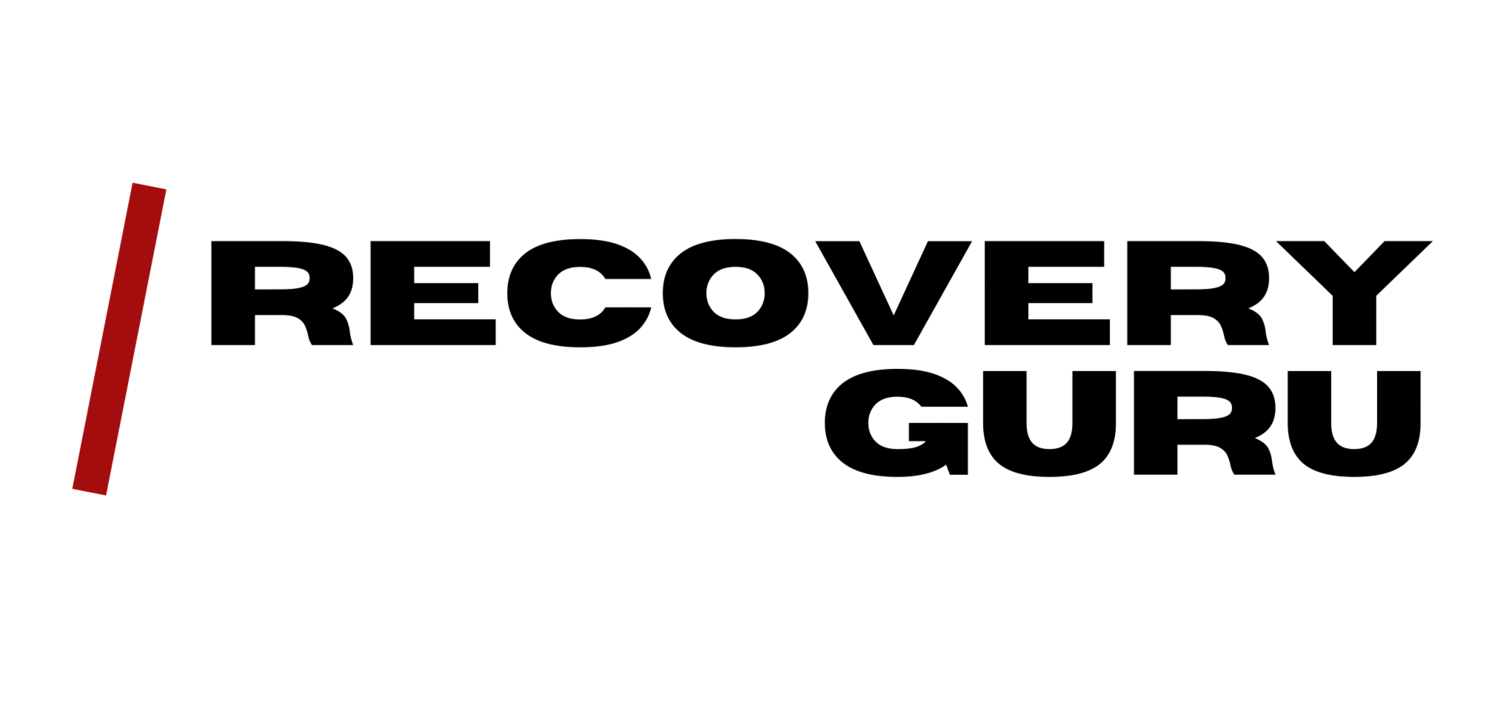









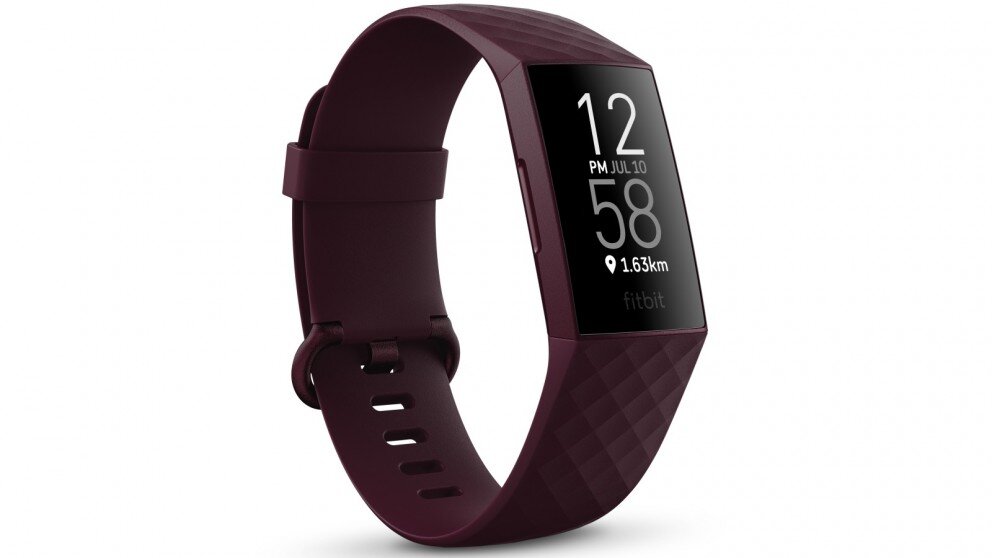



![Sun Home Equinox™ Full-Spectrum Infrared Sauna: Expert’s Honest Review [2024]](https://images.squarespace-cdn.com/content/v1/60c6dafaaf99a435b9e54dc1/1725522699859-HC75C5BZRR2Q8T30N3VD/sun-home-equinox-infrared-sauna-review.jpg)
![Sun Home Saunas Solstice™ Infrared Sauna Full Review [2024]: Expert-Tested](https://images.squarespace-cdn.com/content/v1/60c6dafaaf99a435b9e54dc1/1725428352419-J86NZGZMTD5OH85V8393/sun-home-solstice-sauna-review.jpg)

![Renpho Eyeris 3 Massager Review [2024]: Does It Pass The Hype Test?](https://images.squarespace-cdn.com/content/v1/60c6dafaaf99a435b9e54dc1/1723719780656-3LOKQC2JD7ZDV8LD50KC/renpho-eyeris-3-eye-massager-review.jpg)


![Renpho Power Massage Gun Review [2024]: Powerful, Compact, and Affordable](https://images.squarespace-cdn.com/content/v1/60c6dafaaf99a435b9e54dc1/1723688333383-CIVWVJS47KVK2RBNT6C0/renpho-power-massage-gun-review.jpg)







